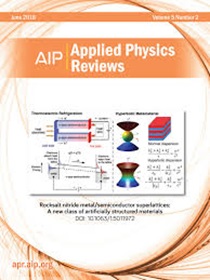Toward the working mechanisms of tin oxide as buffer layer in perovskite/silicon tandem solar cells
IF 11.9
1区 物理与天体物理
Q1 PHYSICS, APPLIED
引用次数: 0
Abstract
Tin oxide (SnOX), a buffer layer commonly used to protect both the electron transport layer and the perovskite layer from sputtering-induced damage during the deposition of transparent conductive oxide in the top cell of perovskite-related tandem solar cells, is considered essential for achieving high efficiencies. Here, we systematically investigate the impact of SnOX on single-junction perovskite solar cells to understand the working mechanism of SnOX in the perovskite top cells. We discuss the correlation between the SnOX process and the photovoltaic parameters using steady-state photoluminescence, external quantum efficiency, space-charge-limited current measurements, and numerical simulations. We observe that the efficiency increased with thicker SnOX and the results suggest that thicker SnOX not only decreases the series resistance of perovskite solar cells but also has the potential to suppress nonradiative recombination. The improved buffer layer is finally used to produce a perovskite/silicon tandem solar cell with an efficiency of 32.84% (with a corresponding efficiency of 31.81% calculated using the short-circuit current density from the external quantum efficiency measurements).在过氧化锡/硅串联太阳能电池中使用氧化锡作为缓冲层的工作机制
本文章由计算机程序翻译,如有差异,请以英文原文为准。
求助全文
约1分钟内获得全文
求助全文
来源期刊

Applied physics reviews
PHYSICS, APPLIED-
CiteScore
22.50
自引率
2.00%
发文量
113
审稿时长
2 months
期刊介绍:
Applied Physics Reviews (APR) is a journal featuring articles on critical topics in experimental or theoretical research in applied physics and applications of physics to other scientific and engineering branches. The publication includes two main types of articles:
Original Research: These articles report on high-quality, novel research studies that are of significant interest to the applied physics community.
Reviews: Review articles in APR can either be authoritative and comprehensive assessments of established areas of applied physics or short, timely reviews of recent advances in established fields or emerging areas of applied physics.
 求助内容:
求助内容: 应助结果提醒方式:
应助结果提醒方式:


